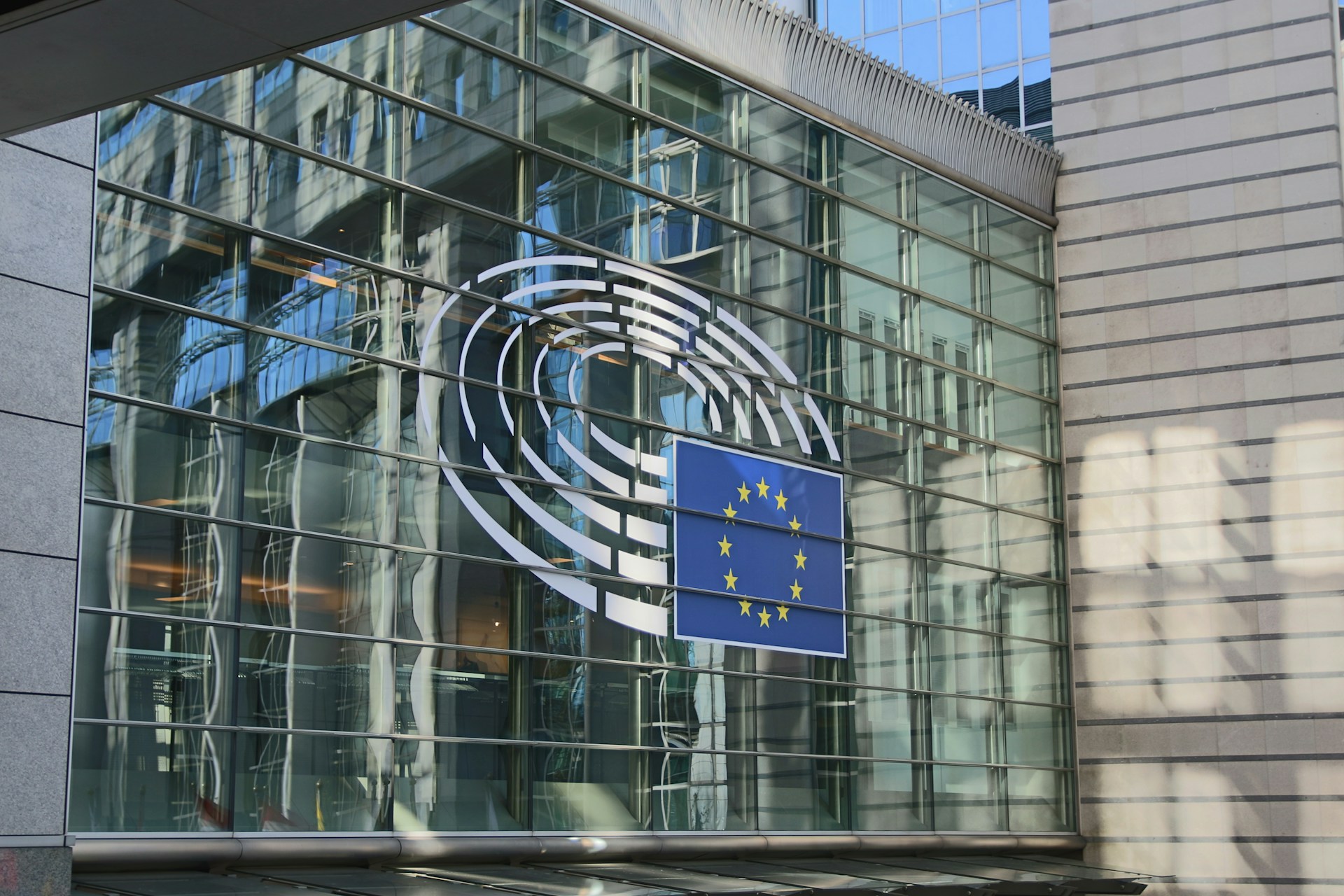
Policy Updates: EU Ban on Products Made With Forced Labour & the Corporate Due Diligence Directive
As per our forecast for 2024, two major EU policies, the Ban on Products Made With Forced Labour and the Corporate Sustainability Due Diligence Directive, have been the subject of recent updates in Brussels.
To help you stay on top of the latest happenings in the EU landscape, in this article, we will go over the most important changes within both of these key legislative pieces.
Want someone with deep experience and connections in the EU to help guide your sustainability strategy? Get in touch!
EU Ban on Products Made With Forced Labour: The New Deal
In the first week of March, the EU Parliament and Council reached a political agreement on the proposal for an EU Ban on Products Made With Forced Labour, which was also adopted by the Council after the vote on the 13th. The regulation determines a complete ban on goods made with forced labour within the Single Market, reinforcing the Union’s commitment to improving not only the environmental standards but also the social practices of EU businesses.
According to the new deal, the law will essentially allow authorities to investigate possible cases of labour violations. It will not introduce additional due diligence obligations.
Let’s have a look at what else has been agreed within this new version of the proposal.
Who Takes Charge of Investigations
Investigations outside the EU’s borders will be led by the EU Commission, but any suspected violations within Member States will be investigated by the states’ National Competent Authorities (NCAs). National authorities will also be responsible for notifying other NCAs if they find evidence of violations within another EU territory, or the Commission if it is related to a third-party country.
Another key element introduced in the provisional agreement is that the burden of proof will not be reversed under any circumstances; meaning that the responsibility to prove the violations will consistently rest on the competent authority conducting the investigations. It’s also expected that the whole investigation process, including preliminary and in-depth investigations, should take a maximum 10 months to reach a final decision on each case.
Establishing A Risk-based Assessment Approach
Both the EU Commission and the NCAs should adhere to the following criteria to assess the likelihood of violations of the terms of the new regulation:
- The scale and severity of the suspected forced labour, including whether state-imposed forced labour may be a concern;
- The quantity or volume of products placed or made available on the Union market;
- The share of the parts of the product likely to be made with forced labour in the final product;
- The proximity of economic operators to the suspected forced labour risks in their supply chain, as well as their leverage to address them;
- Information shared by the other competent authorities;
- Information included in the database;
- Risk indicators included in the guidelines;
- Issues arising from consultations with civil society organisations and stakeholders.
Remediation Guidelines and the Forced Labour Single Portal
Since adhering to the terms of the regulation should be a complex endeavour for both public and private organisations, the provisional agreement also includes initiatives to facilitate those efforts.
The text establishes the creation of a digital platform called Forced Labour Single Portal, which should support authorities in assessing possible violations. In a nutshell, this will be a database with verifiable and regularly updated information about forced labour risks, including reports from relevant organisations, such as the International Labor Organisation.
However, the support provided will not be limited to the investigation phase of the process. The Portal should also house a set of guidelines to help economic operators and public authorities comply with the new rules, including best practices for ending and remediating various types of forced labour occurrences. Developed by the EU Commission, the guidelines will take into consideration the size of the organisations involved and include specific measures for micro, small, and medium-sized enterprises.
Both the Portal and the guidelines will be available 18 months after the official publication of the Regulation.
Final Decisions After Investigation
Once an investigation is concluded, the decision as to how the products should be dealt with will be made by the authority that led the investigation, which can decide to:
- Order the banning, withdrawal and disposal of the products made with forced labour;
- Order economic operators to withhold the products until they can demonstrate that there is no more forced labour in their operations or respective supply chains;
- Order the disposal of the specific parts of the product which were made through forced labour, in the cases where they can be replaced (e.g. parts in an automotive vehicle or an electronic device).
Following the principle of mutual recognition, decisions made by an NCA will also be applicable in all other EU Member States.
Having already been formally adopted by the Council, we expect the regulation to be approved by the Parliament without any major issues in September, in which case the requirements will start applying within three years (i.e. 2027).
The Latest on the Corporate Sustainability Due Diligence Directive
While the Forced Labour Ban proposal establishes a framework for investigating human rights violations, the Corporate Sustainability Due Diligence Directive (CS3D) will take things one step further. As detailed in our Due Diligence Directive explainer article, the policy aims to make it mandatory for EU businesses to ensure adequate environmental and social practices within their operations and that of any suppliers.
Our earlier policy update mentioned that changes were likely on the horizon for the CS3D, and that has indeed been the case.
The text recently approved on March 19 by the European Parliament’s Committee on Legal Affairs (JURI), and to be voted in plenary later this month, has suffered several adjustments by the Council as we will detail next. We expect the final text to be published in the Official Journal over spring.
The Scope
The CS3D’s scope has been reduced if compared to previous versions, and will now cover:
- EU and non-EU companies (including parent companies) with over 1000 employees and with a turnover of more than €450 million;
- Franchises with a turnover of more than €80 million if at least €22.5 million was generated by royalties.
The separate threshold for companies in higher-risk sectors previously mentioned has been deleted. However, sector specific guidelines will be developed to ensure an EU wide harmonisation.
The text now includes an exemption for ultimate parent companies, which have the main purpose of holding the shares of subsidiaries, and which do not engage in management, operational or financial decisions affecting the group.
Implementation Timeline
After entry into force, most likely still in 2024, the Directive’s requirements will progressively start applying within 3-5 years, as per the phases below:
- EU Companies with more than 5000 employees and €1500 million turnover – 3 years after entry into force (i.e. 2027), reporting for the financial year starting January 1st 2028;
- Non-EU Companies with over €1500 million in turnover within the Union – 3 years after entry into force (i.e. 2027), reporting for the financial year starting January 1st 2028;
- EU Companies with more than 3000 employees and €900 million in turnover – 4 years after entry into force (i.e. 2028), reporting for the financial year starting January 1st 2029;
- Non-EU Companies with over €900 million in turnover within the Union – 4 years after entry into force (i.e. 2028), reporting for the financial year starting January 1st 2029;
- All other companies under the scope of the CS3D – 5 years after entry into force (i.e. 2029), reporting for the financial year starting January 1st 2030.
Important to note is that CS3D is a Directive, meaning it will need to be transposed at national level within 2 years. Potential national specificities may be added to the current EU text.
Other Changes in The Text
An institutional commitment to cover financial services in the future has been deleted from the text, as well as a provision that connected the variable remuneration of company directors to their contribution to the organisation’s business strategy and sustainability.
To clarify what will be considered part of a company’s ‘chain of activities’ (or value chain) under the regulation, the following definition has been provided:
- The activities of a company’s upstream business partners (both direct and indirect), including design, extraction, sourcing, manufacturing, transportation, storage, and supply of raw materials, products, or product components, as well as product development.
- Activities related to the company’s downstream operations, such as distribution, transportation, and storage, when these activities are conducted by the direct business partner on behalf of the company.
This means that companies will be required to monitor for human rights and environmental issues at all the above-mentioned stages of a product’s lifecycle, but that the waste management stage is not under the CS3D’s scope.
Companies in scope will still be required to define and implement a transition plan for climate change mitigation. Compliance with the climate requirements under the CSRD will be recognised. Financial incentives related to executive remuneration were deleted.
Finally, the requirement for EU nations to ensure that third parties, such as NGOs, could bring actions to court to enforce victims’ rights has been adapted, and limited to national rules of civil procedure.
These are only a few of the many policy changes coming from the ever-changing EU landscape, and organisations looking to future-proof their business will need to go beyond following the news. Get in touch with our experts and let’s explore the ideal strategies to help you leverage the opportunities presented by the Union’s green future.
Want someone with deep experience and connections in the EU to help guide your sustainability strategy? Get in touch!
Join our newsletter to keep up to date with the latest news and information coming out of the EU.


